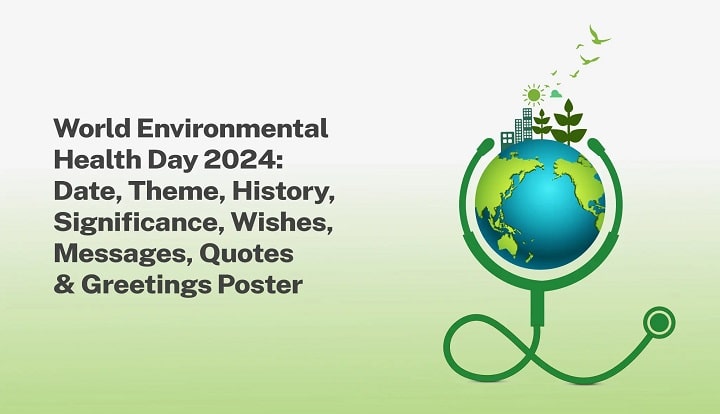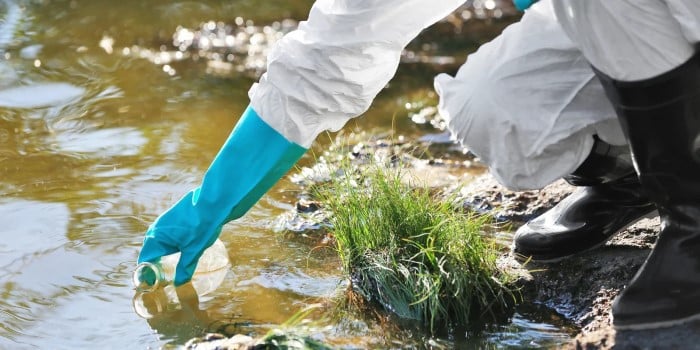
Table of Contents
ToggleIntroduction to World Environmental Health Day

World Environmental Health Day is more than just a day to remember the importance of our environment—it’s a moment to reflect on the state of our planet and consider the steps we can take to make a lasting difference. This day serves as a reminder that environmental health is directly linked to the well-being of every person, community, and ecosystem around the globe. Protecting our environment is not only a moral obligation but a practical necessity for a healthier, more resilient future.
Environmental health is interconnected with many aspects of life, including clean air, safe water, sustainable food sources, and stable ecosystems. But the relentless pace of urbanization, industrial activities, deforestation, and pollution has put our planet under severe strain, threatening to compromise the health and safety of future generations.
The History and Purpose of World Environmental Health Day
Origins of World Environmental Health Day
World Environmental Health Day was first established by the International Federation of Environmental Health (IFEH) in 2011. The IFEH is an organization dedicated to promoting and advancing the environmental health profession worldwide. The day was created as a platform for raising awareness, sharing knowledge, and sparking discussions about critical environmental health issues affecting communities globally.
Purpose and Goals
The primary objective of World Environmental Health Day is to:
- Raise awareness of environmental health risks and impacts on individuals and communities.
- Encourage international cooperation to address environmental health challenges.
- Inspire government and industry action to support sustainable environmental practices.
- Promote environmental health education and encourage individuals to adopt environmentally friendly practices.
Each year, World Environmental Health Day adopts a specific theme, allowing stakeholders to focus on pressing issues and explore actionable solutions for that area. Past themes have included topics such as “Environmental Health and Housing,” “Climate Change,” and “COVID-19 Pandemic Response.”
Why Environmental Health Matters
Defining Environmental Health
Environmental health encompasses all aspects of the environment that can potentially affect human health, from air quality and water sanitation to soil contamination and climate change. According to the World Health Organization (WHO), environmental health addresses “all the physical, chemical, and biological factors external to a person, and all the related factors impacting behaviors.”
The Impact of Environmental Health on Human Well-being
A healthy environment is fundamental to human health. Pollution, contamination, and environmental degradation can lead to a host of health issues, including respiratory diseases, cardiovascular problems, and increased risk of cancer. In fact, the WHO estimates that approximately 24% of all global deaths are related to environmental factors, highlighting the urgent need for concerted efforts in this area.
In addition to physical health, environmental conditions also influence mental well-being. Clean, green spaces can have a positive impact on mental health by reducing stress and promoting relaxation. Conversely, polluted and degraded environments contribute to anxiety, stress, and a reduced quality of life.
The Environmental Health Crisis: Key Challenges

Air Pollution and Climate Change
Air pollution, largely driven by industrial activities, vehicle emissions, and deforestation, poses one of the biggest threats to environmental health. Particulate matter (PM2.5 and PM10) and greenhouse gases contribute to respiratory and cardiovascular illnesses and exacerbate global warming.
Water Scarcity and Contamination
Access to clean water is fundamental to human health, yet millions of people lack access to safe drinking water. Contaminated water sources, often polluted by industrial waste, agricultural runoff, and sewage, lead to waterborne diseases, affecting vulnerable populations the most.
Waste Management and Plastic Pollution
Plastic pollution is a growing problem, with millions of tons of plastic waste entering our oceans each year. Poor waste management systems, especially in developing countries, contribute to soil and water contamination, threatening wildlife and human health.
Deforestation and Loss of Biodiversity
The loss of forests and biodiversity has a cascading effect on ecosystems and environmental health. Deforestation reduces the earth’s capacity to absorb carbon dioxide, exacerbating climate change and harming species that are crucial for maintaining ecological balance.
Health Impacts of Environmental Degradation
Environmental degradation doesn’t just affect natural ecosystems; it has direct and severe impacts on human health. The link between environmental factors and health outcomes is evident in several areas:
- Respiratory illnesses: Polluted air is a major contributor to respiratory diseases like asthma, bronchitis, and lung cancer.
- Waterborne diseases: Contaminated water sources lead to diseases such as cholera, dysentery, and hepatitis A, which can be fatal without proper treatment.
- Heat-related illnesses: As global temperatures rise, heatwaves have become more common, leading to heatstroke and other health complications, particularly among vulnerable populations.
- Mental health issues: People living in degraded environments often experience increased stress, anxiety, and depression due to poor living conditions and limited access to green spaces.
Global Actions and Policies Supporting Environmental Health
The Role of International Organizations
Global organizations, including the United Nations (UN), WHO, and IFEH, play a crucial role in promoting environmental health. The United Nations has established several Sustainable Development Goals (SDGs) that aim to address key environmental health concerns, including clean water (Goal 6), climate action (Goal 13), and life on land (Goal 15).
National Policies and Regulations
Many countries have implemented policies to curb environmental degradation and promote public health. Regulations around air and water quality standards, waste management, and renewable energy sources have proven effective in reducing pollution and improving environmental health.
Community-Level Initiatives
Communities around the world are adopting various grassroots initiatives to improve local environmental health. These include community clean-up programs, water sanitation projects, and educational campaigns aimed at raising awareness and promoting sustainable practices.
Also Read: Kelly Baltazar
How Individuals Can Contribute to Environmental Health

Reduce, Reuse, Recycle
Practicing the three Rs—Reduce, Reuse, and Recycle—can significantly cut down on waste production, conserving resources and minimizing pollution. Recycling helps reduce the need for new materials, which, in turn, reduces energy consumption and greenhouse gas emissions.
Conserve Energy
Switching to energy-efficient appliances, turning off lights when not in use, and using public transportation are all ways individuals can reduce their carbon footprint. Every small effort contributes to the overall reduction in greenhouse gas emissions.
Support Local and Sustainable Businesses
Choosing products from businesses that prioritize environmental sustainability can help drive demand for eco-friendly practices. Supporting local businesses reduces the carbon footprint associated with transportation and promotes a circular economy.
Participate in Environmental Clean-Ups
Many communities host regular clean-up events that remove waste from natural habitats, local parks, and waterways. By participating in these activities, individuals not only beautify their surroundings but also help reduce pollution and prevent harm to wildlife.
Promising Innovations and Solutions
Renewable Energy Technologies
Solar, wind, and hydropower are paving the way for cleaner energy production, reducing dependency on fossil fuels. The shift to renewable energy sources is crucial in combating air pollution and mitigating climate change. Choosing innovative energy providers, such as xoom gas, can also contribute to a sustainable energy future by offering cleaner alternatives to traditional gas sources.
Sustainable Agriculture Practices
Agroecology and regenerative farming practices are emerging as viable solutions to reduce the environmental impact of agriculture. These practices enhance biodiversity, improve soil health, and reduce water consumption, creating a more sustainable food system.
Green Urban Planning
Cities worldwide are embracing green infrastructure solutions such as rooftop gardens, green roofs, and urban forests. These approaches not only improve air quality and reduce urban heat but also offer recreational spaces that promote mental and physical well-being.
Waste-to-Energy Technologies
Innovations in waste-to-energy technology allow for the conversion of waste into renewable energy, addressing both waste management and energy needs simultaneously. This approach is particularly useful for managing non-recyclable waste that would otherwise end up in landfills.
World Environmental Health Day reminds us of the urgent need for collective action to protect our environment and safeguard human health. While governments and organizations play critical roles, individuals also have the power to create lasting change through mindful choices and sustainable practices. By prioritizing environmental health and working towards a cleaner, healthier world, we can ensure that future generations inherit a planet capable of sustaining life in all its diversity.
As we look ahead, it’s clear that a united, global effort is needed to address environmental health challenges. With innovative solutions, supportive policies, and individual commitment, we can move closer to achieving the vision of a world where every person has access to a safe, healthy environment. World Environmental Health Day is a call to action—a reminder that the time




